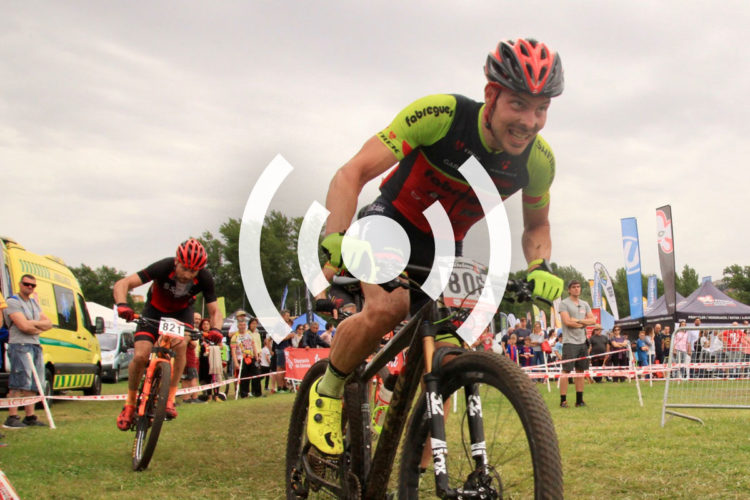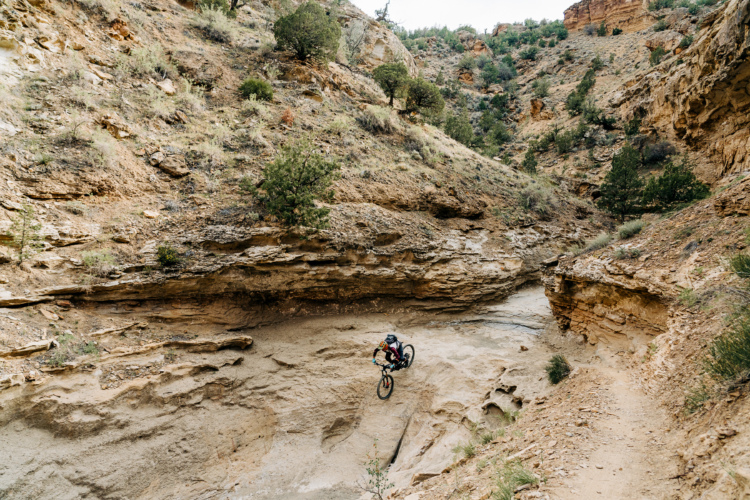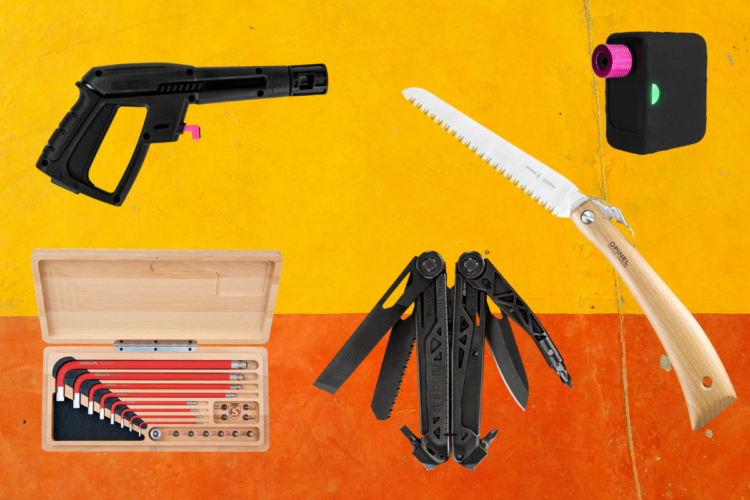
Editor’s note: Headline updated to clarify and better reflect the study findings.
A study conducted by researchers at Brigham Young University (BYU) completed this summer suggests that riding eMTBs provides a workout that is nearly as hard as mountain biking without a motor.
Really, it was only a matter of time before someone put the internet’s assumptions to the test to find out if riding an e-bike really is “cheating.” So, researchers at BYU, just outside of Salt Lake City, Utah, recruited local mountain bikers to participate. Before they started, participants had to fill out a “pre-eMTB ride questionnaire.” The questionnaire asked the participants what their assumptions and attitudes about e-mountain biking were prior to the ride. They also mostly picked mountain bikers who had no experience riding an electric mountain bike. Out of 33 participants in the study, only three said they had ridden one before.
The study had two main goals: To find out how an eMTB workout compares in terms of energy expenditure to a conventional mountain bike ride, and to find out how mountain bikers’ perceptions change before and after riding an eMTB.
To put this up front, the study was funded by an internal grant from the Department of Public Health at Brigham Young University, just in case anyone suspects Bosch or Specialized might be behind this. Also, the institutional review board at BYU approved the study, meaning that its methodology was up to snuff for the university’s standards.
Subjects were strapped up with an Apple Watch, paired to a Polar H10 heart rate monitor, and Strava, to record the participant’s ride data with GPS, measuring total distance and speed. Participants were randomly assigned to ride a 6-mile loop with 700 feet of elevation gain on either an eMTB or a regular mountain bike.
After participants completed the loop on the first bike, their data was saved, and then they rode the loop on the other bike. Researchers selected the 2017 Specialized Turbo Levo FSR Comp Carbon 6Fattie and the Specialized Stumpjumper FSR Comp 6Fattie, since they were the most similar motorized and non-motorized bikes available. Participants also had the choice to ride their own mountain bike in place of the Stumpjumper.
For the 33 riders selected, 29 were male, and the average age was about 38-years-old. Sixteen of the 33 participants had more than 10 years of mountain biking experience, and 24 out of 33 said that they ride at least twice a week.
When the study kicked off, the participants completed the 6-mile course 12 minutes and 40 seconds faster on average if the were aboard an eMTB. The average speed of travel was also 4.1mph faster than on a conventional mountain bike, and participants’ average heart rate was about 10 beats per minute (BPM) lower.
Researchers determined the mean maximum heart rate (MHR) to be 182 BPM, based off of participants’ average age of 38. The subjects’ average target heart heart (THR) for moderate-intensity exercise was determined to be 91-127 BPM at 50-70% of their MHR, and vigorous intensity was defined at 128 – 155BPM, or 70-85% of their MHR.
The study found that riding both the eMTB and conventional MTB placed participants in the upper-half of the vigorous intensity zone, or closer to 70% of their MHR, although as stated above, the average heart rate was still 10 BPM lower (9.9 was the exact number mentioned in the study).
“Using heart rate as a proxy measure for cardiovascular exercise intensity and related exercise response, eMTB use appears to be an excellent form of aerobic or cardiovascular exercise, even for experienced mountain bikers who regularly engage in this fitness activity.”
Changes in attitude
Perhaps more interestingly, researchers dove into the participants’ thoughts about eMTBs before and after riding one. After the study, fewer participants thought that eMTBs “will prove to be a passing fad,” and also thought that their heart rate felt considerably lower while riding an eMTB than a conventional mountain bike. Three riders were less accepting of eMTBs afterwards, eight experienced no change in their attitude, and the majority (20) were more accepting toward eMTBs.
The exceptions

This study represented the first time that researchers attempted to measure the beliefs of mountain bikers who rode an eMTB for the first time, says researchers. Only 18% (about six) of the participants, said they were opposed to eMTBs before riding them. “As there are many in the mountain biking community with strong negative opinions about eMTBs, this is likely a reflection of sampling bias, which is to say that those volunteering […] likely had more positive views of eMTBs and were excited for the opportunity to ride one.”
While the physical expenditure on an eMTB may be very close to that of a non-motorized mountain bike, the participants finished the 6-mile loop almost 13-minutes quicker on the e-bike than they did the non-motorized bike.
“If a conventional mountain bike was to be replaced by an eMTB as part of a cardiovascular fitness program, then total ride time, not ride distance, would need to remain constant,” notes the study. Researchers also note that the average speed of eMTBs are a factor in trail users’ perceptions against eMTB use. The concern comes from the amount of speed an eMTB may present in a congested area of trail.
The study also notes that the participants didn’t perceive riding an eMTB to be a workout or taxing on their cardiovascular system, even though on average their heart rates were only 10BPM lower than on a conventional MTB.
Researchers also want readers to consider that the study had several limitations. First, the study was limited by a small sample size, with opinions that may not be representative of the greater mountain bike population.
The study was also limited by its physiological measures. “Future studies examining similar variables would benefit from more sophisticated measures, such as maximal oxygen uptake, metabolic equivalents, and watts.” Participants also only rode the loop once on each bike and “their heart-rate response might have changed after an extended observation period.”
The study was further limited by the fact that most of its participants were already fairly supportive of eMTB use, and couldn’t fully measure a change in attitude or perception to electric mountain bikes, although there was a pretty good indication of what direction it would be pointed.
Potential for getting more into the sport
Another great argument for e-bikes is that they will allow more people to get into the sport. Since the participants perceived less exertion while riding the eMTBs, researchers argue that in terms of making people more physically active, regularly, eMTBs are beneficial.
Perceived benefits and perceived barriers are factors in the Health Belief Model and predictors in adherence to behavior change. Perceived benefits refer to how effective something may be to reduce health risks and perceived barriers are one’s opinion on the cost of something, whether that is financial, physiological, or psychological when considering a physical activity. While the physiological and psychological barriers are possibly lowered, the high cost of most eMTBs doesn’t do much to lower the financial barrier.
The literature on eMTBs has been released slowly, and this is one of a handful of studies approaching the topic. While eMTB opponents who read the study might not change their mind anytime soon, based on the results of this study, it seems riding an eMTB just might do the trick.





















17 Comments
Dec 6, 2019
Dec 5, 2019
Dec 5, 2019
What the study reveals is that riders work out, or pedal, almost as hard on an e-bike which is NOT the same thing as saying the e-bike is almost as hard to pedal. Given how much faster riders complete the same course with similar or less exertion is actually proof that the e-bike is much easier to pedal.
Whether or not this is "cheating" depends on what you're measuring against.... or even if you're measuring yourself at all.
Dec 5, 2019
Dec 6, 2019
Dec 6, 2019
Dec 5, 2019
Dec 6, 2019
1. On this one trail loop, when people rode the e-Bike their speed was ~50% faster even though their heart rate was 10 beats per minute lower.
(NB: For someone that trains with a heart rate monitor I can tell you that 10bpm is not inconsequential).
2. So the riders on a NON-motorized bike took ~50% longer to complete the same loop AND at a higher heart rate
3. Whereas it may be true that the difference in heart rate for some riders may still be in the same training zone for others it would not.
If my math is correct: then to get the same "total effort" on an ebike then you would need to ride 58% longer. And keep in mind, the cardio benefits may be different because the workout intensity (i.e. avg heart rates) are different. (Although I suspect the difference would go down since heart rate would likely increase over the extra distance).
This is not meant to convey an opinion of whether ebikes should be allowed on non-motorized trails but merely to point out what the study actually showed.
Dec 6, 2019
Finally, these trails that we love, the FS and BLM will have to close them to all mechanized use (no bikes at all) due to erosion/overuse. Whats the answer to this? Don't bitch if you dont have a solution, right? I want 2wheelfun out there with me, but maybe No eMTBs is an answer, albeit, a terrible but necessary one.
Dec 5, 2019
Dec 5, 2019
Dec 6, 2019
Dec 5, 2019
Dec 5, 2019
Dec 5, 2019
Dec 6, 2019
Dec 5, 2019
i also thought it was important that the study mentioned e-mtb riders would have to ride for the same amount of time, not the same distance, in order to get a workout equivalent to the regular mtb rider.
another interesting point in the article is their main limitation: 'using heart rate as a proxy measure for cardiovascular exercise intensity.' i'm curious what type of mechanical limitations there are that prevent the use of a power meter on an e-bike. couldn't they use a single or double crank power meter data as another type of indicator? or is there some kind of interference due to the motor/crank interface?